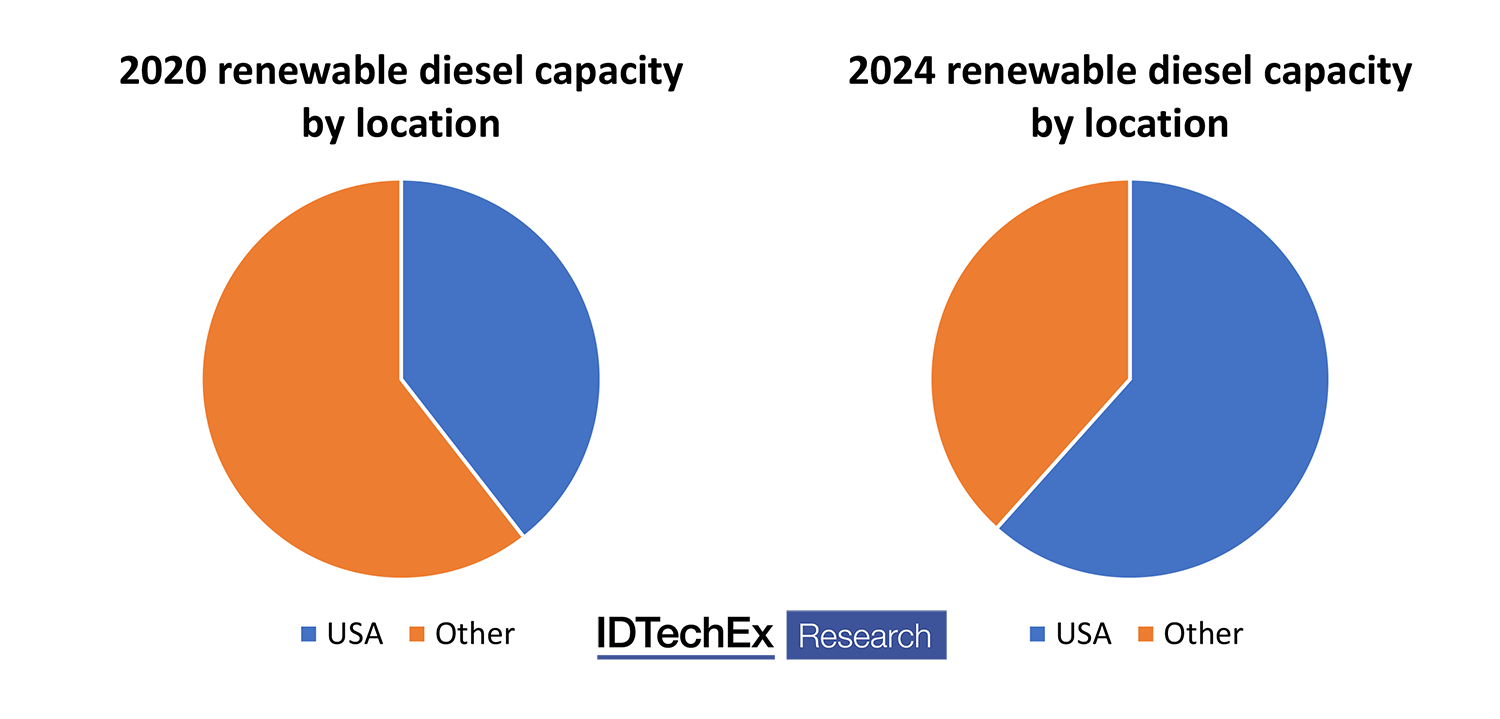Short term growth prospects for renewable fuels
Limits on the amount of bioethanol and biodiesel that can be blended with conventional fossil fuels mean growth in the consumption of certain biofuels has slowed considerably, or plateaued, over the past five years. However, with CO2 targets becoming increasingly stringent, and some sectors being difficult to electrify, renewable fuels are likely to still be needed over the coming years.
While growth potential for conventional and 1st generation biofuels may be limited, demand for other types of alternative fuels looks set to grow over the coming decade. For example, renewable diesel, also known as hydrotreated vegetable oil (HVO), can act as a drop-in replacement for fossil-based diesel and so is not restricted to a blend limit in the same way as conventional biodiesel.
Furthermore, renewable diesel can be produced from waste products such as used cooking oil, potentially offering substantial emissions savings over the use of fossil fuels, which in turn increases the value credits and incentives offered to producers and blenders, especially in Europe and the USA. As such, there has been considerable recent interest in increasing the amount of renewable diesel produced.
Plans for new renewable diesel capacity are particularly significant in the USA, which IDTechEx expects to hold over 60% of production capacity by 2024, as forecast in the recent report ‘Sustainable Alternative Fuels 2021-2031’, up from under 40% in 2020.

However, supplies of waste feedstocks are not limitless and the production of renewable diesel also relies on virgin material, including problematic feedstocks such as palm oil, where the impacts of land-use changes can greatly reduce the environmental benefit. To mitigate against the use of palm oil, or other problematic feedstocks, some companies are seeking to utilise municipal waste and forestry residues through the use of hydrothermal liquefaction or gasification, though the vast majority of renewable diesel production is still expected to be based on hydrotreating.
Similar alternative feedstocks can be used to produce sustainable aviation fuels (SAF), via routes combining gasification and the Fischer-Tropsch process or through the fermentation of alcohol. However, again, the majority of production is set to come from a process similar to that used for producing renewable diesel, which for SAF is termed hydro processed esters and fatty acids synthetic paraffinic kerosene (HEFA-SPK). IDTechEx estimates that nearly 90% of the offtake agreements and capacity announcements that occurred between 2014-2020 were for SAF produced via this process.
Driven primarily by emissions reduction targets and public incentives, short-medium-term demand for renewable diesel is forecast for growth. However, beyond the next 10 years, there is greater uncertainty, especially for on-road transport applications, where there is significant momentum behind the shift to battery electric vehicles and where technological advancements and improvements to infrastructure are set to enhance the possibility of heavy-duty and freight sectors.
Nevertheless, hard to abate sectors such as marine and aviation are likely to continue to rely on fuels, providing longer-term opportunities for a variety of renewable fuels, including biofuels. Here, commercial development of processes able to make use of sustainable and waste feedstocks will be important to minimise the demand for food crops or palm oil, while policies need to ensure on-road transport is not disproportionately incentivised over other sectors.
The latest report from IDTechEx on the topic, ‘Sustainable Alternative Fuels 2021-2031’, provides a comprehensive overview and comparison of the key technologies, markets, and players for various sustainable fuels, including renewable diesel, sustainable aviation fuels, and electro-fuels.










